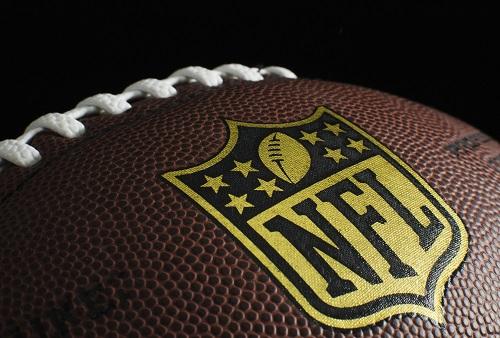

Through the millions of dollars the NFL spent on contact tracing and mitigation efforts, the league and researchers discovered more about how COVID-19 is transmitted. As a result, the CDC defined a new high-risk contact category and has been better able to optimize its guidance and regulations for sports facilities, schools, and other venues that operate with fluctuating crowds.
Early Season Efforts
When the season began, the NFL implemented a full roster of COVID-19 safety protocols including asking players, coaches, and staff to wear masks, undergo routine testing, and don ultra-wideband distance monitoring and contact tracing devices. The efforts initially paid off. Data from the CDC shows the NFL administered nearly 300,000 PCR nasal swab tests and identified just 47 new cases from August 9 – September 26, 2020. But as the country continued to feel the grip of coronavirus, the league began to suffer. The CDC reports the NFL conducted nearly 330,000 nasal swab tests between September 27 – November 21, 2020 with 282 new cases reported.
The midseason spike indicated to researchers that some part of the risk mitigation plan was still leaving athletes and staff vulnerable to transmission. Through contact tracing and distance monitoring data, the NFL and CDC researchers determined that even if people were having cumulative interactions that were less than 15 minutes, they were still at high risk if they did not wear masks properly and were in a smaller enclosed space, like an athletic training room or cafeteria.
This prompted the NFL to revise its COVID-19 safety protocols and the league implemented stricter measures, including a mandatory quarantine after any high-risk exposure, the closure of communal eating areas, and a tighter mask requirement. The league also expanded its contact definition to consider distance, time, mask use, and ventilation air flow (holding more events outdoor rather than indoor).
By the time the Super Bowl arrived, the league enacted further safety measures for fans, including capping attendance, requiring physical distancing and face coverings, implementing foot traffic patterns and pod seating, and installing hygiene stations throughout the host facility in Tampa, Florida. Staff were required to undergo temperature checks before entering the stadium and wear face masks and gloves.
While venues that host professional sports have the support and financial backing of powerhouse leagues, local and regional multipurpose facilities have less bandwidth to coordinate similar safety measures. However, there are key takeaways from the NFL’s example that are backed by the new CDC research. Here is a brief breakdown of the top risk mitigation strategies sports venues can enact to protect their spectators, staff, and athletes throughout this pandemic and beyond.
Athlete Safety- At the most basic level,protecting athletes requires several measures, including thermal temperature entrance scanning and personal protective equipment like masks. However, the NFL’s example also teaches us that using technology like COVID-19 rapid testing and distance monitoring devices like ultra-wideband bracelets are critical to keeping athletes safe. Implementing COVID-19 rapid testing reduces the likelihood someone who is infected with the virus will enter a facility. And, in the unfortunate incident they do make it inside, distance monitoring and contact tracing will help identify any possible exposures.
The NFL uses ultra-wideband technology smart tags, which is more precise than GPS, WiFi, and Bluetooth, and can be used at both indoor and outdoor workspaces. Athleteswear an extremely lightweight sensor (15 grams) to always pinpoint their location. The device sends an alert (within 0.1 seconds) when someone is too close to another person and sends all data to a command center, which provides valuable insights into how a facility is operating and identifies areas that might need to be reconfigured in real-time. The technology also allows for instantaneous contact tracing.
Crowd control – Everyone wants fans at a game. They make the environment fun, plus they generate additional revenue for facilities (eating, parking, merchandising) and communities (hotels, restaurants, attractions). But no one wants spectators to turn into super spreaders. Contactless temperature kiosks positioned at venue entrances help prevent anyone with a fever from entering, and they can scan for face mask compliance. For example, if the scanned temperature is above 100.4 degrees, a warning light will indicate that access has been denied, but if a temperature is normal, access will be granted.
Once inside, facilities should follow the NFL’s lead and implement physically distanced pod seating. This ensures small groups of people who are already in regular contact with each other sit together and are spaced at least six feet away from other pods. Additional occupancy tracking devices installed at entrances to the building and to restrooms prevent any unhealthy interactions between fans.
However, these fluctuations in capacity can be difficult to track, view and monitor without a centralized command center. A dashboard that integrates with thermal scanning and wearables and can communicate results to leadership in real time can help facility managers track pandemic?related activity. The dashboard can analyze real?time location data and issue quick notifications, medical guidance, and instructions. Additionally, a centralized command center helps venue management adhere to regulatory health and safety compliance and ensure state and local traffic density guidance is being followed.
Limited services – As a result of the midseason spike in positive test results and the ability to trace and identify how the virus was transmitted between athletes and staff, the NFL tightened its COVID-19 restrictions within the facility. For example, the NFL restricted indoor unmasked activities, mealtime interactions, and in-person meetings held indoors. Instead, meetings were encouraged to be held digitally or outdoors, eating areas had limited and physically distanced seating, mask wearing was met with increased vigilance, and even ridesharing to and from the facility was limited.
Sports venues can make similar adjustments to the settings and ventilation of events. Team meetings can be held outdoors, or organizers can reconfigure indoor spaces to be larger or have better ventilation. Athletes must sit six feet apart during mealtimes and masks must be worn (some states even require athletes to wear masks during competition). Athletic training rooms can be better ventilated and have occupancy restrictions in place. Finally, concessions stands can be spaced out to reduce foot traffic and lines can be configured to promote physical distancing.
The Right Play
Perhaps the biggest lesson the NFL and CDC have taught us with their research is that COVID-19 mitigation measures must be continually optimized based on available data. The path to keeping public health at the forefront of sporting events may be found in technology. Though state guidelines include health and safety protocols, cleaning standards, social distancing measures, and more, the NFL and CDC have finally provided venues with concrete data that showcase the significant role technology can play in the ability to execute and expand on these guidelines.
Many facility operators have started using smart solutions to help implement crucial protocols in their risk mitigation strategies. By using these programs, they can address health and safety concerns before, during, and after athletes, fans, staff, and vendors have been on-site to prevent the spread of COVID-19.

